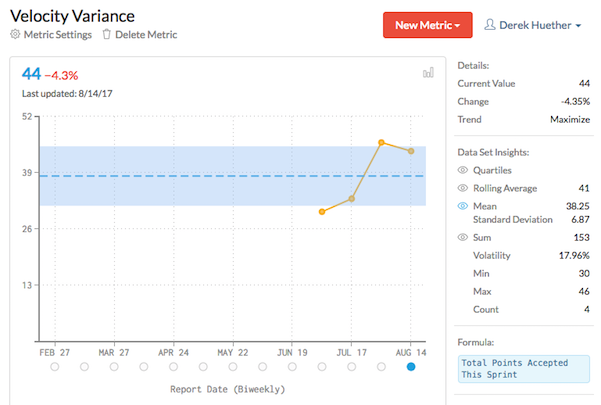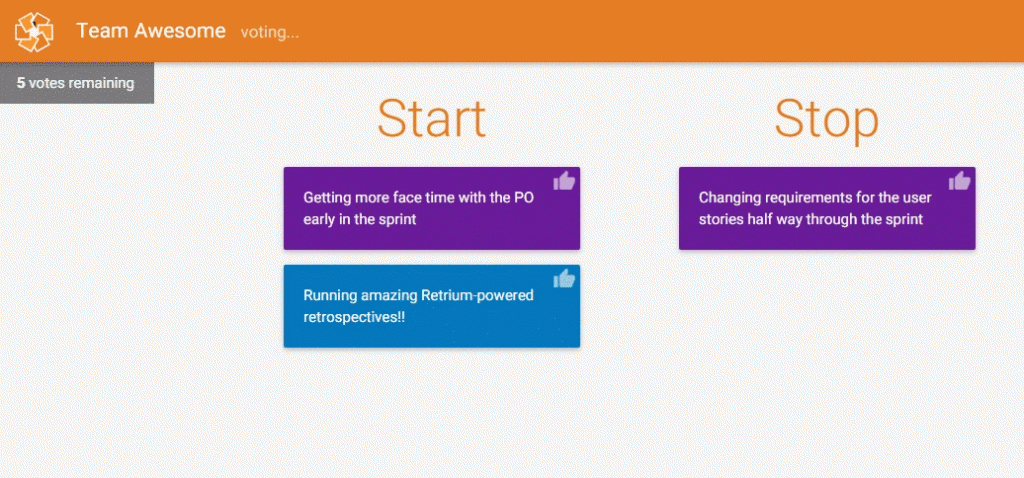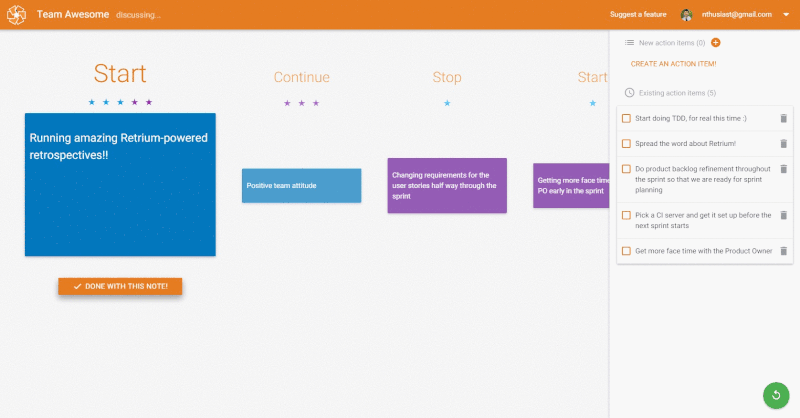“For every complex problem there is an answer that is clear, simple, and wrong.”
Knowing your metrics
velocity variance
Know your metrics and the behaviors they drive
Everyone at your company should understand which metrics drive the business, and what behaviors they encourage. That's what Joe Nigro, CEO of energy company Constellation, said in a 2016 Harvard Business Review article. He went on to say, “Everyone needs to know how each metric fits into the big picture…why and how we’re measuring something, and how it’s relevant to performance.”
More directly, I would say metrics should capture the changing environment of your business so you can make informed decisions. But how do you know your metrics are any good?
Encouraging behaviors
If you ask your fellow employees which metrics drive the business, would they know? Would they care? I believe their jobs should depend on them caring, though measuring that would be difficult. If they are unwilling to do their part, perhaps they should "help" some other company. Everyone should be held personally accountable to understand what helps drive the business and how they can help. If they knew what the metrics are, how could it change their behavior (in a positive way)?
Metrics executives may be thinking about
From an executive level, I can only imagine every CEO (from Joe Nigro of Constellation to your own) start by thinking about these metrics:
Topline revenue - Money made from selling goods or services
Customer retention - Attracting the right customer, getting them to buy, buy again, buy in higher quantities or at higher rates.
Customer acquisition cost - The total cost associated with acquiring a new customer, including all aspects of marketing and sales.
Gross margin - Calculated as a company's total sales revenue minus its cost of goods sold, divided by the total sales revenue, expressed as a percentage.
Overhead costs - fixed costs that are not dependent on the level of goods or services produced by the business, such as salaries or rents being paid per month.
I hope executive management will help employees understand the metrics that drive the business and why they are important. I hope the employees will internalize these metrics and consider ways to help the company increase revenues, widen margins, or control costs.
One step deeper into the weeds
From a productivity level, be it manufacturing or software development, I think the staff (and the executives) need to understand (and improve) the system of delivery. To this, if executive management doesn't know these productivity numbers, then how can they know when they are making unreasonable requests of the system? A system of delivery in a black box and executives in an ivory tower are not a good combination. A dissatisfied staff can put your company at serious risk, while on the other hand, a satisfied and productive staff can help drive the business.
Cycle time - The total time from the beginning to the end of your process.
Lead time - Starts when a request is made and ends at delivery.
Utilization - 100% being the maximum, it's the act of making practical and effective use of people or things
Throughput - The amount of material or items passing through a system or process. What did you get done or delivered?
Cost of Delay - The means to calculate and compare the cost of not completing something now, by choosing to do it later.
I hope everyone will think of ways to shortening cycle and lead times while maintaining or increasing throughput. If maximum utilization is how you make the greatest topline revenue, how do you reach that utilization level without breaking your people or machinery?
Another step deeper into the weeds
From an individual level, I believe we are truly personally accountable. Let's ask the first two questions from this post again. Which metrics drive the business? What behaviors do they encourage?
Commitment/Completion Ratio - What have I personally committed to? Am I meeting that commitment?
Throughput (Velocity) Variance - Given the things that I've recently completed, am I predictable? Can others make commitments, based on what I do?
Confidence Score - How confident am I that I will actually keep the commitment I made?
I hope individuals will be honest about what they think they can do in a given period of time. I hope they will be honest with their coworkers and with management if they don't think they can keep a commitment.
What behaviors do you think metrics encourage?
Image Source: Calculated Velocity Variance via Notion [UseNotion.com]
Leading and Lagging Indicators
Product Review for Distributed Retrospectives
On a monthly basis, I see at least one distributed retrospective. Sure, I would prefer to do it onsite with participants, on a wall with sticky notes, but that's not always an option. So, what can we do about it? Not having the retrospective is not an option. Instead, I want to find a tool that has a low level of friction, is purpose built, and reasonably priced. Sounds like it's time for a product review! Over the last few years, I've used several products for distributed retrospectives. Each of them sucked in their own special way. So, I thought about testing Retrium. My first thoughts are I like it!
Currently, they have Five major techniques (4L's, Mad-Sad-Glad, Start-Stop-Continue, Lean Coffee, and Went Well, Didn't Go Well) customized for the distributed experience. With that, I focused my attention on the "Start, Stop, Continue" technique.
Steps I used for the product review:
Step One: Choose a retrospective format. I picked Start, Stop, Continue.
Step Two: To start the retrospective the facilitator should explain how the technique works. He or she should then tell the team the timebox for the retrospective (30-60 minutes, depending on the size of the team). In Retrium, you can set a timebox time for each step or the overall retrospective. I like to set a timer for each step.
Step Three: Ideation. The facilitator should tell participants the timebox for this phase (10-15 minutes should be enough). Participants will then start entering ideas on the board, under the respective heading (Start, Stop, Continue). As the participants enter ideas, the text will not be visible to other participants (until the grouping phase). I like this features, as keeping ideas private will help ensure participants aren't biased by each other's ideas. When the timebox expires, we move onto the grouping phase. If people are full of ideas, the facilitator can extend the timebox timer.
Step Four: Grouping. The facilitator then chooses to advance to the idea grouping phase. I'd recommend the facilitator inform the participants that once you move on to the Group phase, you will not be able to return to the previous phase. Since ideas will likely be related (or even identical), participants should group items into logical themes. Participants can label the logical groups on the screen.
Step Five: Dot Voting. The facilitator then chooses to advance to the voting phase. Again, I'd recommend the facilitator inform the participants that once you move on to the Voting phase, you will not be able to return to the previous phase. As noted earlier, each one of these phases can be timeboxed with a timer feature located on the screen. In my retrospective, participants had 5 votes they could cast against the groups. After voting is complete or the timer expires, the facilitator advances the retrospective to the Discussion phase.
Step Six:Discussion. This is where I believe you are going to get the most benefits from this product. In the discussion phase, only one idea group at a time will be displayed. Here, you will create action items. When you're ready, choose the next topic (group). Add more action items to your Action Plan. You can then choose to review the action plan or end the retrospective. This is by far the step most retrospectives fail at. No action plan is easily maintained and worked.
Retrospective History and Action Plan: Now that the retrospective is over, you can go back and look at previous retrospectives and more importantly, have an ongoing action plan of improvement.
So, is Retrium worth the cost? At the time of this blog post, 1 team room was $49 a month.
You'll get the following:
- Access to all retrospective techniques
- Run an unlimited number of retrospectives
- Invite an unlimited number of users
- Create and track action plans
- View your retrospective history
Is it worth it? I recommend you check out this ROI calculator and dynamically calculate your return on the investment. If you can save your team just 30 minutes a month, through improvements, the product pays for itself.
I would definitely recommend this product!
Full disclosure: I have no financial relationship with Retrium. However, I do know a few of the people there.
Blog
Objectives and Key Results (OKR) is a popular leadership process for setting, communicating and monitoring goals and results in organizations on a regular schedule, usually quarterly. The intent of OKRs is to link organization, team and personal objectives in a hierarchical way to measurable results or outcomes, focusing all efforts to make measurable contributions.
Social Engineering on a flight to Baltimore
Be careful out there. Social engineering is a real thing, even on a flight to Baltimore. I was returning on a flight last night when this male passenger sat in the seat next to me. He was overly friendly and chatty so I shut him down. He changed seats so he could sit (and talk) with the woman across the isle. Over the next hour, I could overhear him engage her in casual conversation. Or was it? Listen in and hear a few pointed questions he asked and she answered.
Estimation and Meeting Sprint Commitments
In this episode of SoundNotes, Dave Prior and Derek Huether respond to a couple questions from students who have taken a LeadingAgile CSM and/or CSPO class over the past couple months. Here are the questions they will address in this short video podcast:
Question 1:
My team seems to have a problem with estimating and understanding the estimating concepts. The team members are accustomed to traditional waterfall projects and estimating everything in units of time. How can I help them understand estimating, but continue to complete the sprints with no PBIs (Product Backlog Items) rolling over to the next sprint?
Question 2:
I have a team lead who is skeptical of scrum, especially metrics related to the process. He doesn’t think carryover matters from sprint to sprint as long as we’re “creating value” and getting the program priorities completed. Any advice on how to convince him that metrics can be a tool for good, and that the sanctity of the sprint commitment matters?
8 Domains Executives should Plan and Coordinate
Planning and Coordinating use Agile PPM tools
Executives are responsible for maintaining the structure of the organization and supporting the mechanisms that enable the flow of value across many teams. To that, executives should plan and coordinate across major organizational domains. Though I believe there are eight domains which executives should be planning and coordinating in, I'm not prepared to say Sales & CRM or Marketing Management should be included in an Agile PPM tool (at this time). Beyond that, a single PPM tool should cover the remaining six domains.
Often, the first tools purchased are to help the delivery teams manage their daily work. As the organization evolves or grows, more tools are purchased to cover the gaps left by the team-level tools. The tools then become entrenched. At some point, organizations have a collection of tools they are trying to maintain and they lose sight of the original reasons for purchasing and implementing them.
Organizations then turn to PPM tools. There is a wide variety of motivations for using agile project portfolio management (PPM) tools. One key reason can simply be the desire for their teams to collaboratively plan. Other key reasons include the desire to prioritize and track work on a synchronized cadence, while providing visibility of the portfolio to the executive stakeholders. To meet organizational needs, the number of tools being used to satisfy these desires expand over time.
Before you choose an Agile PPM tool, remember that your company operations should influence how that tool is implemented across your organization, not the other way around.
What types of problems are Agile PPM tools good at solving?
Six Organizational Domains of Planning and Coordinating
Portfolio Management
The art and science of making decisions about investment mix and policy, matching investments to objectives and key results (OKRs), asset allocation for individuals and institutions, and balancing risk against performance. Your Agile PPM tool needs to provide a sufficient level of visibility of the roadmap and investment themes, through the lens of a portfolio team.
Program Management
The process of managing several related projects or products that are part of an investment portfolio. Your Agile PPM tool must provide a sufficient level of visibility of the release backlog and to allow for necessary elaboration for release targeting, all through the lens of a program or capability team.
Capacity Management
Deals with the organizations ability to create or develop new product. Capacity constraints in any process or resource can be a major bottleneck for a company. Your Agile PPM tool should make it easy to know what the organization and teams have historically delivered, in order to understand where the bottlenecks exist, and what to commit to in the future.
Human Capital Management
Related to people resource management. In order to deliver product predictably, it is necessary to have stable teams, providing specific competencies. Your organization needs the right people in place to deliver on commitments in the portfolio. Do you need to hire or replace people? Your Agile PPM tool should help facilitate a conversation around who are the right people, what teams they should be on, and when we need them on a team.
Dependency Management
The ability to either encapsulate or orchestrate around “dependent” organizational, structural, or technical activities. Dependencies tend to be a major productivity killer for organizations. They slow and sometimes stop the ability to deliver value. It is critical that your Agile PPM tool provides indications of dependencies across the organization. Having the first indication of a dependency discovered after a delivery team has already made a commitment against its impacted deliverable is too late.
Budget Management
Refers to a financial plan for a defined period of time. It may also include planned revenues, resource quantities, costs and expenses, assets, liabilities and cash flows. Your Agile PPM tool must provide the necessary information to shift conversations from just scope and schedule to budget.
Summary
Use the above list as a guide to catalog tools your organization is using (or considering) for planning and coordinating. Are there gaps or are there overlaps and duplications? If you have overlaps and duplications, there is an opportunity for you to consolidate some of those tools. Begin consolidating tools, and you may reclaim some budget next year you didn't think you had.
Want to know how you are covering the six or eight domains? Schedule an assessment with me.






